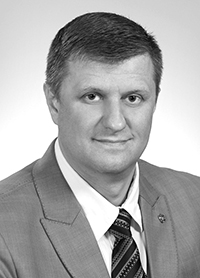SYNERGIZED PHYSICAL AND TECHNICAL TRAINING MODEL FOR 12-13-YEAR-OLD SWIMMERS: BENEFITS FOR ANNUAL TRAINING CYCLE
Keywords:
physical and technical training, junior swimmer, synergy, harmony, training tools, annual training cycle.Abstract
Objective of the study was to test benefits of the new synergized physical and technical training service model for the 12-13-year-old swimmers within their annual training cycle.
Methods and structure of the study. We used in the study video replays to analyze the individual swimming techniques; dynamometry using a SwimForceTest system; and standard mathematical statistics toolkit for the test data processing. We sampled for a yearly training experiment the 12-13-year-old Class I swimmers (n=57) trained for the third year, and split them up into Reference Group (RG, n=38) and Experimental Group (EG, n=19). The RG was trained as required by the traditional system, and the EG trainings were complemented by the synergized physical and technical fitness model with controlled movement biomechanics in the gym/ aquatic practices, and special excellence workouts in every motor skill training.
Results and conclusion. The new synergized physical and technical training service model for the 12-13-year-old swimmers was found beneficial as verified by the significant progress of the EG versus RG in the strength, technical fitness and top swimming speed tests. The priority to the strength training elements in the new model helped develop more efficient stroke dynamics in the EG versus the RG. Special excellence elements geared to improve the movement kinematics and dynamics in the further practices are expected to yield further benefits for the synergized training service and competitive fitness of the trainees.
References
Arishin A.V., Akhmetov S.M., Pogrebnoy A.I. Combined application of physical and technical training means during basic mesocycle in professional swimming. Teoriya i praktika fiz. kultury. 2020. No. 12. pp. 92-94.
Matveyev L.P. Theory and methodology of physical education. Textbook for universities. 3rd ed., rev., sup.. Moscow: Fizkultura i sport, SportAkademPress publ., 2008. 544 p.: il.
Platonov V.N. Motor qualities and physical training of athletes. Moscow: Sport publ., 2019. 656 p.: il.
Platonov V.N. Competitive swimming: how to succeed. V. 2. Мoscow: Sovetskiy sport publ.. 2012. 544 p.: il.
Fomichenko T.G. Age patterns of manifestation and training of strength qualities in competitive swimming. Doct. Diss. (Hab.). Мoscow, 1999. 318 p.: il.
Daiki Koga, Kenta Homoto, Takaaki Tsunokawa, Hideki Takagi. Hydrodynamic Re-Examination of Underwater Non-Propulsive Phase In Front Crawl. 38th International Society of Biomechanics in Sport Conference, Physical conference cancelled, Online Activities: July 20-24, 2020.

Additional Files
Published
Versions
- 17-01-2022 (2)
- 01-12-2021 (1)

